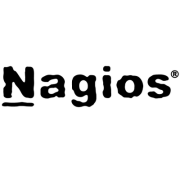Network Traffic Analysis (NTA) is critical for identifying and addressing potential security threats by monitoring and analyzing network flows. It provides valuable insights into network health and vulnerabilities, allowing IT professionals to act proactively.
NTA tools help organizations protect their assets by closely examining the data traversing their networks. These solutions offer deep visibility into network activities and can efficiently detect anomalies and suspicious behavior patterns. By analyzing real-time and historical data, IT teams can strengthen security postures and minimize the risk of breaches. The growing complexity of network environments requires advanced NTA solutions to manage and secure both on-premises and cloud-based resources.
What are the critical features of this solution?Network Traffic Analysis solutions are implemented in various industries such as finance, healthcare, and retail where large volumes of sensitive data must be protected. These industries benefit significantly from the ability to uncover hidden threats and enforce stringent security policies.
Organizations are using NTA to bolster their security frameworks and maintain robust protections against evolving cyber threats. By allowing IT teams to identify and mitigate risks more effectively, NTA tools play an important role in safeguarding organizational assets and ensuring continuity.
| Product | Market Share (%) |
|---|---|
| Darktrace | 23.9% |
| Cisco Secure Network Analytics | 14.6% |
| ExtraHop Reveal(x) | 14.1% |
| Other | 47.4% |
































Noticeably absent from the term “Network Traffic Analysis” is the word “response.” Network-based solutions should be able to not only investigate and detect threats, but also respond rapidly and effectively. There has been a recent shift in terminology to refer to NDR, or “network detection & response,” which uses NTA but then goes one step beyond, with automated threat response and threat-hunting, using intelligent integration with firewalls, NAC, SOAR, or EDR platforms.
Benefits of NTA include:
There are two basic kinds of NTA tools: flow-based tools and DPI (deep packet inspection) tools. Within these, there will be options for historical data storage, software agents, and intrusion detection systems.
Consider the following things when deciding what NTA solution is right for you:
1. Availability of flow-enabled devices. Not all devices are capable of generating the kind of flows required by NTA tools. In contrast, DPI tools accept raw traffic that is vendor independent and found on every network through any managed switch. Network routers and switches don’t require any kinds of special modules or support.
2. The data source: Packet data and flow data come from different sources. Not all NTA tools can collect both. So decide on your priorities before deciding. And then be strategic in choosing what to monitor. Don’t take on too many sources too quickly.
3. Historical data vs. real-time. While historical data can be critical to analyzing past events, not all NTA tools retain this data over time. Have a clear idea of which kind of data is most important to you.
4. Is the software agent-based or agent-free?
5. Full packet capture, complexity, and cost. When looking at DPI tools, consider the cost and expertise required for those that capture and retain all packets versus one that extracts only the critical details and metadata.
Network Traffic Analysis significantly enhances security by monitoring, capturing, and analyzing network traffic to detect anomalies, potential threats, and unauthorized movements. By providing a comprehensive view of network activities, NTA solutions can identify irregular patterns that might indicate a security breach, allowing you to respond quickly and prevent damage.
What are the benefits of integrating AI with NTA solutions?Integrating AI with NTA solutions offers advanced threat detection capabilities, allowing for the automatic identification of potential issues through machine learning algorithms. AI can process vast volumes of data in real-time, improving the accuracy and speed of threat detection, thus providing more proactive and efficient network security management.
How can NTA help in compliance and risk management?NTA solutions assist in compliance and risk management by providing detailed visibility into the network, enabling you to ensure that data transmissions align with regulatory standards. By logging and auditing traffic, NTA can help demonstrate compliance with specific regulatory requirements and identify areas of risk, improving overall security governance.
What role does NTA play in identifying insider threats?NTA plays a crucial role in identifying insider threats by analyzing internal network traffic. By establishing a baseline behavior for user activities, NTA can detect deviations that could indicate malicious actions by insiders. This proactive approach helps you identify and mitigate potential risks from within the organization before any significant damage occurs.
Does implementing NTA impact network performance?Implementing NTA generally does not significantly impact network performance when properly set up. Modern NTA solutions are designed to operate efficiently, often utilizing packet sampling and flow data to minimize load. Proper configuration and resource allocation ensure that you can maintain robust network security without sacrificing performance or user experience.